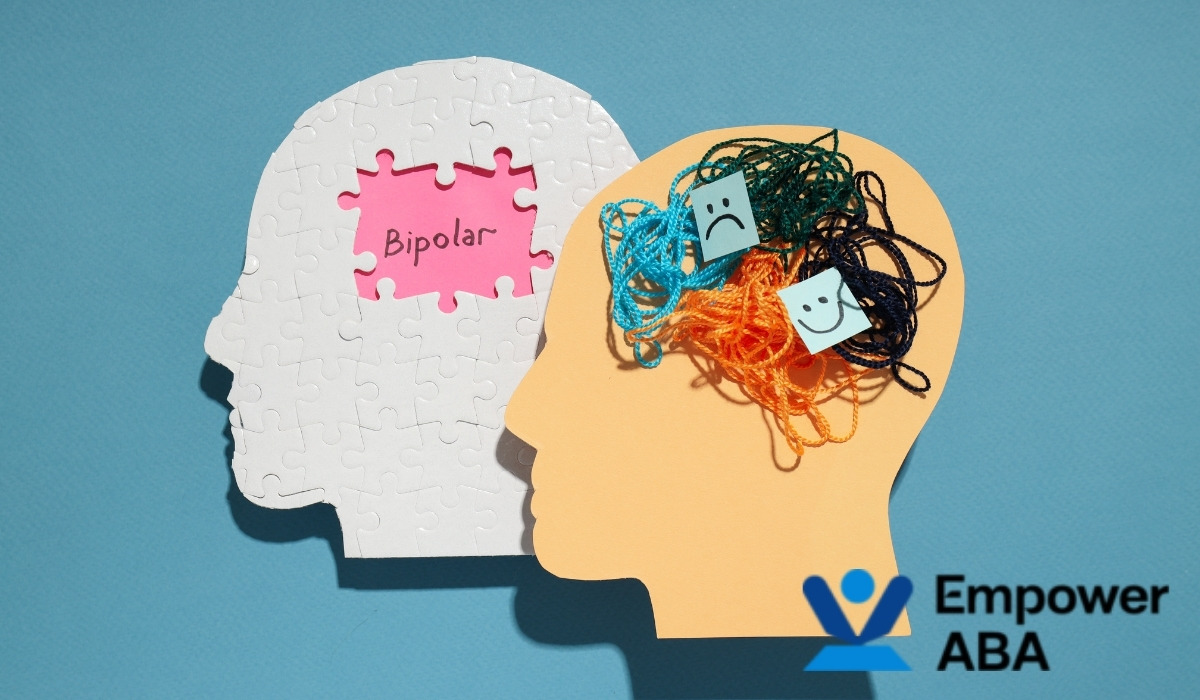Key Points:
- Bipolar disorder and autism can show overlapping behaviors, but their root causes and patterns are very different.
- Emotional highs and lows in bipolar disorder differ from autism’s consistent traits and social communication challenges.
- An accurate diagnosis is essential, and professionals use specific criteria to tell the two apart.
When a child is struggling emotionally or behaviorally, it’s only natural for parents to ask questions—and want answers fast. Some children might seem moody, overly sensitive, or unusually energetic at times, and deeply withdrawn at others. In the middle of all the confusion, it’s common to wonder: Is this autism, or something else?
This is where an important question arises: Can bipolar be mistaken for autism? Especially in children and teens, where behavior is still developing and emotional regulation is a work in progress, the two conditions can sometimes look surprisingly similar. But while they may share certain surface traits, they are fundamentally different—and understanding those differences is key to getting the right support.
Can Bipolar Be Mistaken for Autism?
Yes, bipolar disorder can sometimes be mistaken for autism, especially in children and adolescents. That’s because both conditions can involve mood changes, social difficulties, and unusual behavior patterns. However, each has distinct characteristics and underlying causes.
Knowing the difference helps parents make sense of what they’re seeing—and find the right kind of care. In this article, we’ll explain how to tell the two apart, where the overlap happens, and what to do if you’re not sure which diagnosis fits.
Why are Bipolar and Autism Sometimes Confused?
Understanding the overlap can help clarify why confusion happens in the first place. Some symptoms can look alike at first glance, even though the reasons behind them are different.
Here are a few examples of similar behaviors that may lead to questions about whether a child has bipolar disorder or autism:
- Mood swings or intense emotional reactions: Both children with autism and those with bipolar disorder may show sudden shifts in mood or struggle to regulate their emotions.
- Impulsivity or unusual energy levels: Autistic children may appear hyper-focused or overactive in sensory-stimulating situations. Meanwhile, kids with bipolar disorder may show bursts of energy during manic phases.
- Social difficulties: Both conditions can involve trouble making friends, reading social cues, or maintaining eye contact.
- Sleep disturbances: Irregular sleep patterns are common in both bipolar disorder and autism.
Because of these shared signs, it’s easy to see why families—and sometimes even professionals—might initially mistake one condition for the other.

Key Differences Between Bipolar Disorder and Autism
While the surface behaviors might look similar, the key differences lie in what causes those behaviors, how they present over time, and how consistently they show up.
1. Pattern of Mood Changes
In bipolar disorder, mood changes tend to happen in episodes. These include:
- Manic episodes – periods of unusually high energy, rapid speech, impulsivity, and sometimes risky behavior.
- Depressive episodes – times of deep sadness, low energy, and withdrawal.
These shifts happen in cycles and are often out of character from the child’s usual self.
In autism, emotional responses are more consistent over time and are usually tied to environmental triggers (like sensory overload or social confusion), not chemical mood swings.
2. Social Understanding and Communication
Autistic children often have lifelong challenges with:
- Understanding social rules
- Picking up on the tone of voice or facial expressions
- Expressing themselves clearly in conversation
In contrast, children with bipolar disorder might struggle socially during certain episodes but not all the time. Their social abilities typically match developmental expectations when they are not in a manic or depressive phase.
3. Developmental History
Autism is a neurodevelopmental condition. This means signs often appear early—before age 3—and affect how a child interacts, learns, and communicates from a young age.
Bipolar disorder, on the other hand, usually develops later in childhood or adolescence. A child may develop typically for several years before mood symptoms appear, which can make it harder to distinguish from other overlapping conditions. If you’re exploring how certain mental health challenges can mimic one another, don’t miss our article Autistic Burnout vs Depression: Key Differences Explained.
Getting the Right Diagnosis: What Parents Should Know
Getting a correct diagnosis is essential. It not only helps you understand your child better but also ensures they receive the support that truly helps.
When evaluating a child for autism or bipolar disorder, clinicians consider:
- Onset and timing of symptoms – Did they appear early in life or start more recently?
- Consistency of behavior – Are mood and behavior fairly stable or changing in cycles?
- Type of challenges – Is the main issue social communication, or are intense mood changes more prominent?
They may use tools like developmental histories, observation sessions, behavior checklists, and interviews with parents and teachers.
How to Support a Child When You’re Unsure of the Diagnosis
While you’re in the process of evaluation or if you’re feeling unsure, there are still ways to support your child emotionally and behaviorally.
Here are supportive strategies that work well regardless of the exact diagnosis:
- Create predictable routines – This helps reduce anxiety and provides structure, which benefits children with either condition.
- Practice calm communication – Speak slowly, use visual cues if needed, and give extra time for responses.
- Track behaviors and triggers – Keep a journal of what seems to set off mood changes or meltdowns. This will help during evaluations.
- Focus on emotional safety – Remind your child that emotions are okay, and you’re there to help, not judge.
If your child is already receiving support, such as therapy or special education services, continue with what works while seeking clarity on the diagnosis.
When to Seek a Re-Evaluation
Sometimes, a child is misdiagnosed with one condition when another is actually the cause. If things don’t feel quite right—or the current treatment isn’t helping—it may be time to ask for another look.
Here are some signs it may be time for a second opinion
- New behaviors have emerged that weren’t part of the original diagnosis
- Medication or therapy isn’t making a noticeable difference
- You’ve received conflicting information from different professionals
- Your child has aged and the symptoms are changing
Always trust your instincts. You know your child best. If something doesn’t add up, don’t hesitate to ask more questions.
Empower ABA: Real Support for Families Seeking Answers
Whether you’re still figuring out if your child has autism or you’ve already received a diagnosis, it’s important to have the right support system in place. That’s where ABA therapy can make a real difference.
At Empower ABA, we help children on the autism spectrum build the skills they need to thrive—emotionally, socially, and behaviorally. Our therapy programs are personalized, data-driven, and grounded in compassion.
We offer ABA therapy in Virginia, New York, and New Jersey, supporting families who want more than just answers—they want solutions that work in everyday life.
If you suspect autism or are navigating life after a recent diagnosis, get in touch with us today. Our team is here to guide you every step of the way with understanding, expertise, and care.

